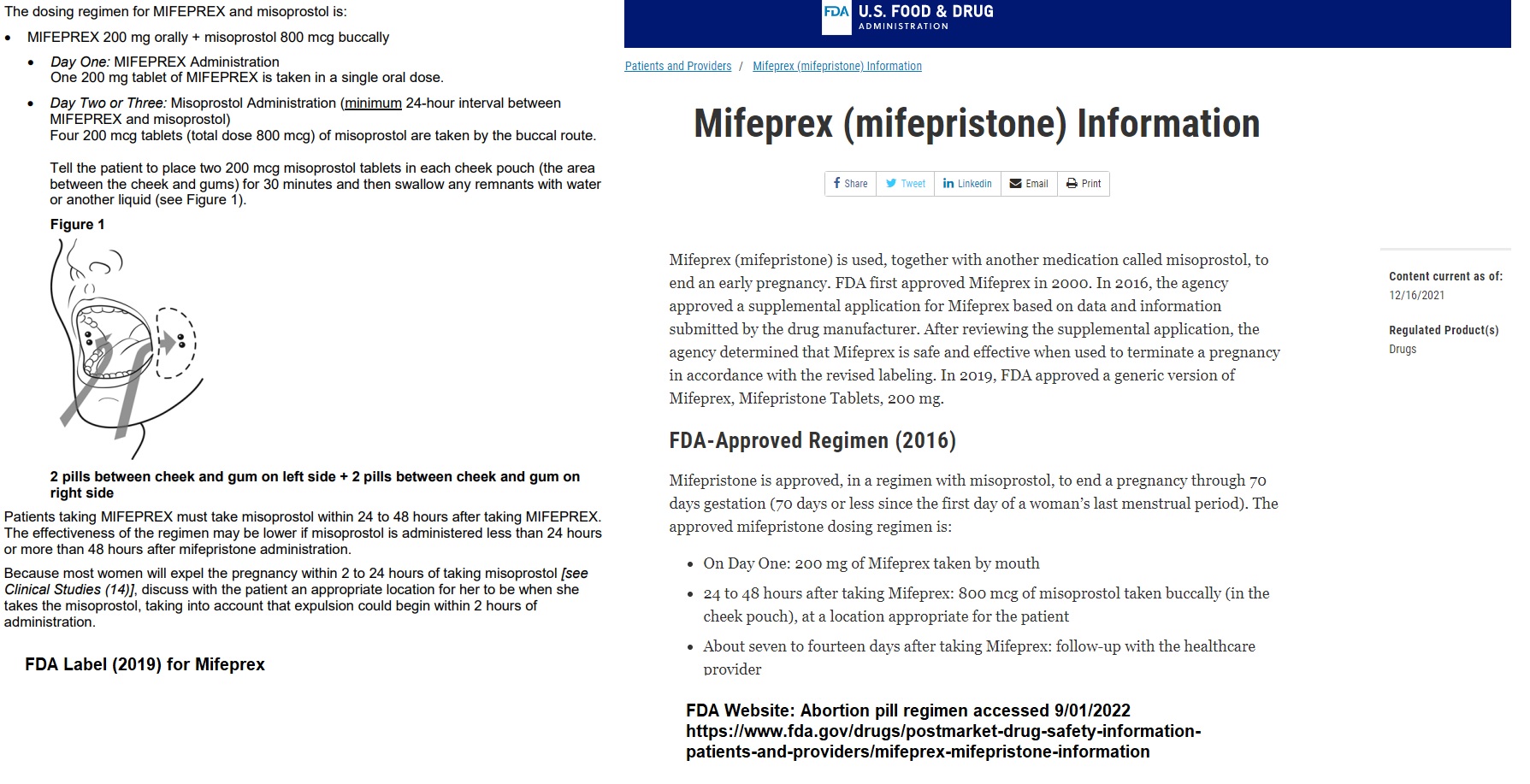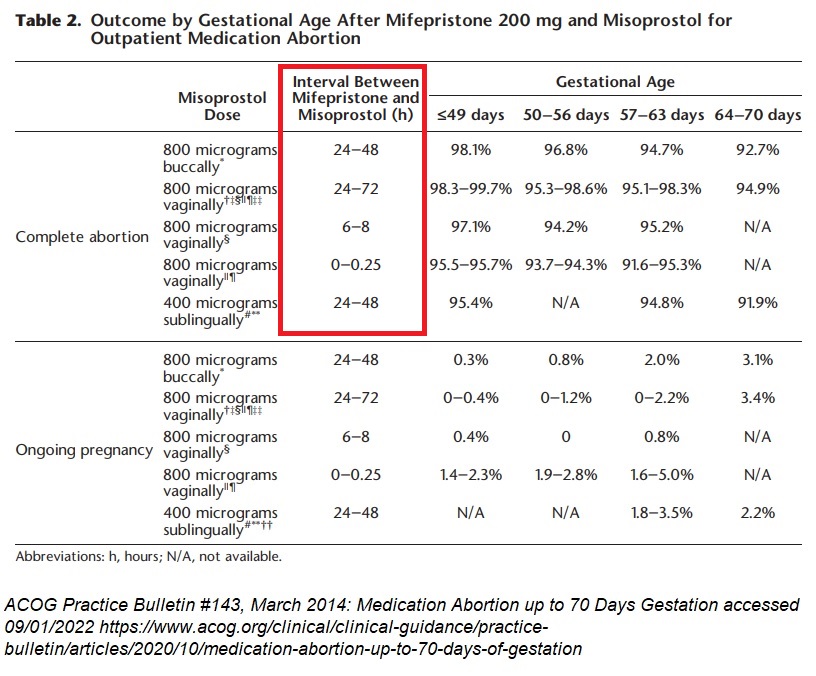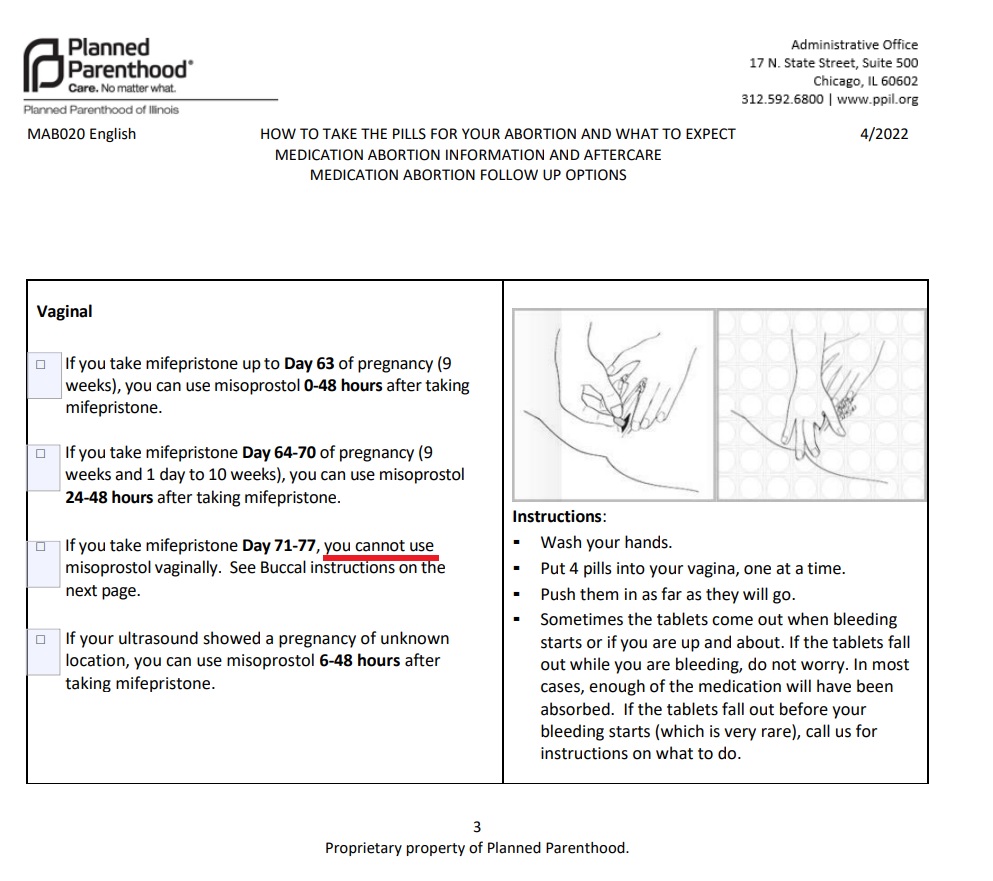Recent reports indicate that Planned Parenthood facilities may now be requiring a same-day abortion pill protocol administration for women traveling from out of state. This protocol differs from the FDA-approved protocol, and may be less effective and more risky for women who use it.
The approved abortion pill protocol has been meticulously detailed in the drug’s label as well as the “patient agreement” required under the U.S. Food and Drug Administration’s (FDA) REMS safety system. In addition, the FDA’s website indicates that on day one, the abortion pill mifepristone or Mifeprex is taken by mouth. This pill starves the baby of the nutrients she or he needs to survive. Then, according to the FDA’s website, approximately 24 to 48 hours later, the second drug (misoprostol) is taken buccally (in the cheeks). This drug causes the contractions that then expel the child from the womb.
But rather than abide by the FDA’s approved protocols, the abortion industry continues to make changes that seem to only benefit them.

Abortion pill FDA approved regimen
In 2020, the industry rolled out a “no test” or “de-medicalized” abortion pill protocol which enabled abortion facilities to maximize profits by dispensing abortion pills without conducting testing, labs, or ultrasounds to determine gestational age or rule out life-threatening ectopic pregnancies. This potentially places women’s lives at greater risk.
In July of 2022, a report from KWIT in Iowa noted that because the “Sioux City Planned Parenthood is seeing an increase in patients from states where abortion has been banned” the Iowa Planned Parenthood is “being careful in how it handles abortions for patients from states with bans” by requiring those clients “to complete their medication abortion on-site.” KWIT added, “Rather than administering the medication orally, the clinic will administer it vaginally – which doesn’t require patients to wait 24 hours for a second dose of the medication.”
In a separate report from the Washington Post regarding a policy change by the National Abortion Federation (NAF), that paper pointed out that “While both abortion pills — mifepristone and misoprostol — can be taken at the same time if the misoprostol is taken vaginally, this method is far less popular and would made immediate travel risky, providers say, because the patient could begin passing the pregnancy on their way home.”
READ: Is the Biden administration forcing pharmacies to dispense the abortion pill against FDA rules?
Vaginal protocol may result in diminished efficacy
According to a chart published by the pro-abortion American College of Obstetricians and Gynecologists (ACOG) on “medication abortion,” the efficacy rate appears to be diminished when women take misoprostol vaginally at the same time as mifepristone.
ACOG’s chart (below) shows that when taking misoprostol buccally (in cheeks) at 24-48 hours after mifepristone, the completion rate is 98.1% (at or less than seven weeks) and drops to 92.7% at 64 to 70 days (or nine to ten weeks) of pregnancy. Similarly, misoprostol taken vaginally at 24-72 hours after mifepristone shows an efficacy rate of 98.3% (at or less than seven weeks) but drops to 94.9% at 64 to 70 days (or nine to ten weeks) of pregnancy.
But when misoprostol is taken vaginally at the same time as mifepristone (0-.25 hours), the failure rate rises and efficacy drops to around 95 or 96% (at or less than seven weeks) and decreases even further when using this protocol between eight to nine weeks, ranging from to 91.6 to 95.3% at 63 days (or nine weeks) of pregnancy. The chart did not indicate what the failure rate would even be at 10 or more weeks, writing “N/A.”
This is problematic, as most Planned Parenthood and abortion facilities are selling abortion pills well past the FDA-approved 10-week cut off. The abortion pill has been a boon for the industry. As of 2020, the abortion pill made up more than half (54%) of all abortions committed in the United States.

ACOG medication abortion interval between Mifepristone and Misoprostol accessed 09012022
In addition, Planned Parenthood of Illinois’ instruction and aftercare document on medication abortion clearly warns, “If you take mifepristone Day 71-77, you cannot use misoprostol vaginally.”

Planned Parenthood April 2022 doc on abortion pill
Infection concerns
In 2003, Planned Parenthood’s implementation of an unapproved regimen and off-label use of the abortion pill led to the death of 18-year-old Holly Patterson from septic shock. Patterson’s father Monty told reporters, “I learned of 10 reported deaths from sepsis (serious infection involving the blood) following medical abortions, and nine of these were from Clostridium sordelli and all involved these alternative, off-label treatments… That day in the hospital, there were officials from Planned Parenthood who showed up and said that nothing like this had happened before. I just didn’t believe it.”
In 2015, Melissa J. Chen, MD, and Mitchell D. Creinin, MD, warned that “Vaginal misoprostol administration was routinely used in the United States until reports of severe infection with Clostridium sordellii after medical abortion surfaced, prompting a reevaluation of vaginal misoprostol and a search for alternative routes of misoprostol administration.”
Creinin is on the payroll of the U.S. abortion pill manufacturer Danco Laboratories, and in that 2015 report he and his co-author added, “Although the use of vaginal misoprostol was ultimately not the cause of these infections, continued safety evaluations from Planned Parenthood Federation of America showed that severe infection, albeit a rare complication, decreased after changing to a buccal misoprostol regimen in addition to screening for sexually transmitted infections or providing routine preventive antibiotic coverage as part of the medical abortion” (emphasis added).
That sentiment was echoed by OB/GYN Dr. Ingrid Skop, Senior Fellow and Director of Medical Affairs for the Charlotte Lozier Institute, who told Live Action News, “This recommendation is another example of the abortion industry prioritizing its own needs over the health and safety of women seeking abortion. Years ago, Planned Parenthood stopped using vaginal misoprostol over compelling evidence that serious infections were more common with this method. No new data is available to contradict that.”
Dr. Skop added, “Clinical protocols for more than 20 years recommended misoprostol 24-48 hours after mifepristone, giving time for mifepristone’s anti-progesterone effect to disrupt the implantation site so misoprostol induced contractions could more efficiently empty the uterus. It is unknown whether simultaneous administration will result in higher rates of failures, but of course, it will protect abortion providers from legal penalties from states restricting the procedure, so efficacy and safety will take a backseat to the abortion provider’s needs.”
“Like” Live Action News on Facebook for more pro-life news and commentary!







